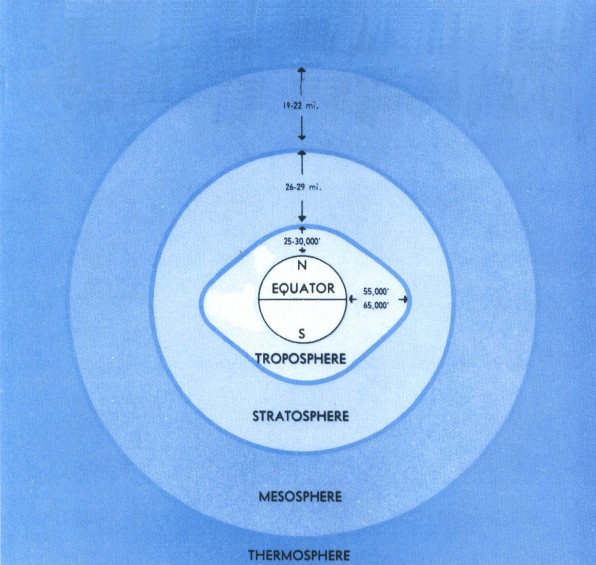Aviation Weather
full text of the classic FAA guide
VERTICAL STRUCTURE
We classify the atmosphere into layers, or spheres, by characteristics exhibited in these layers. Figure 2 shows one division which we use in this book. Since most weather occurs in the troposphere and since most flying is in the troposphere and stratosphere, we restrict our discussions mostly to these two layers.

The TROPOSPHERE is the layer from the surface to an average altitude of about 7 miles. It is characterized by an overall decrease of temperature with increasing altitude. The height of the troposphere varies with latitude and seasons. It slopes from about 20,000 feet over the poles to about 65,000 feet over the Equator; and it is higher in summer than in winter.
At the top of the troposphere is the TROPOPAUSE, a very thin layer marking the boundary between the troposphere and the layer above. The height of the tropopause and certain weather phenomena are related. Chapter 13 discusses in detail the significance of the tropopause to flight.
Above the tropopause is the STRATOSPHERE. This layer is typified by relatively small changes in temperature with height except for a warming trend near the top.
Table of Contents
Previous Section: Composition
Next Section: The Standard Atmosphere
A PDF version of this book is available here. You may be able to buy a printed copy of the book from amazon.com.
